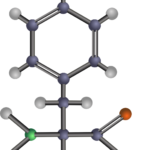In the rapidly evolving worlds of pharmaceuticals and materials science, the ability to understand and predict molecular behavior with unparalleled precision is a game-changer. At the heart of this transformation lies quantum chemistry, a field that uses the principles of quantum mechanics to describe the electronic structure and properties of molecules. Unlike classical models, quantum chemistry provides a fundamental, atomistic-level insight into chemical phenomena, enabling researchers to design new drugs and materials with tailored functions far more efficiently than ever before.
This article explores how quantum chemistry has become an indispensable tool in drug discovery and materials design by revealing the molecular underpinnings of structure, reactivity, and interaction. We will examine the fundamental methods, practical applications, current challenges, and emerging frontiers shaping the future of these critical fields.
Understanding Quantum Chemistry: The Basics
Quantum chemistry is grounded in quantum mechanics, the branch of physics describing the behavior of particles at atomic and subatomic scales. At its core is the Schrödinger equation, which governs how the wavefunction of electrons in molecules evolves and determines their energy states.
Unlike classical chemistry, where electrons and atoms are often treated as point particles or averaged charges, quantum chemistry treats electrons as wave-like entities. This allows detailed predictions of electronic distributions, bond formation, excited states, and molecular vibrations.
Key Computational Methods
Quantum chemical calculations come in various flavors, each balancing accuracy and computational cost:
Ab Initio Methods: These “from first principles” approaches solve the Schrödinger equation without empirical parameters. Examples include Hartree-Fock (HF) and post-Hartree-Fock methods like Møller-Plesset perturbation theory (MP2) and coupled-cluster (CC) methods. They offer high accuracy but are computationally intensive, limiting use to small or medium-sized molecules.
Density Functional Theory (DFT): DFT approximates electron behavior using electron density rather than wavefunctions, enabling the study of larger systems with reasonable accuracy. It is widely used in both drug and material research.
Semi-Empirical Methods: These simplify calculations using experimental parameters, making them faster but less accurate. Useful for very large molecules or initial screening.
Advances in high-performance computing and algorithm development have pushed these methods from theoretical curiosities to practical tools integrated into research pipelines.
Quantum Chemistry in Drug Design
Drug discovery traditionally relied on trial-and-error and serendipity, but the rise of quantum chemistry has ushered in a new era of rational drug design—designing molecules based on detailed understanding of their atomic-level interactions with biological targets.
Predicting Molecular Interactions
At the heart of drug efficacy is how well a small molecule binds to its target protein or enzyme. Quantum chemistry allows researchers to model binding sites and compute interaction energies between drugs and targets with high precision.
It reveals hydrogen bonding, van der Waals forces, and electrostatic interactions that govern affinity.
It predicts protonation states and tautomer distributions that affect binding modes.
It clarifies the effects of metal ions or cofactors in enzyme active sites.
This detailed knowledge aids the design of molecules that fit targets like a key in a lock, improving potency and selectivity.
Modeling Reaction Mechanisms and Metabolism
Quantum chemistry helps elucidate how drugs are metabolized in the body, predicting enzyme-catalyzed reactions such as oxidation or hydrolysis. This insight guides modification of molecular structures to enhance stability or reduce toxicity.
For example, calculations can predict how cytochrome P450 enzymes interact with drug candidates.
Reaction barriers and intermediates are characterized to understand metabolic pathways.
Virtual Screening and Accelerated Discovery
Quantum methods are integrated with virtual screening platforms, narrowing down vast chemical libraries to promising candidates. Combining quantum calculations with machine learning models helps predict binding affinities and pharmacokinetic properties more accurately.
Case Studies
HIV Protease Inhibitors: Quantum calculations helped identify binding interactions critical for high affinity, guiding modifications that enhanced drug efficacy.
COVID-19 Therapeutics: Quantum chemistry was applied to model the SARS-CoV-2 main protease active site and screen potential inhibitors rapidly.
Quantum Chemistry in Material Design
Beyond biology, quantum chemistry has revolutionized materials science by enabling the design of materials with tailored electronic, optical, and mechanical properties at the atomic level.
Designing Novel Functional Materials
Researchers use quantum chemistry to predict and engineer properties such as:
Electronic conductivity in semiconductors or conductive polymers.
Optical properties for photovoltaics and LED materials.
Mechanical strength and flexibility in polymers and composites.
By understanding how electrons are distributed and how chemical bonds respond to stimuli, scientists can design materials for specific uses without costly trial-and-error synthesis.
Catalysts and Energy Materials
Catalysts accelerate chemical reactions critical in industry and energy. Quantum chemistry helps elucidate reaction pathways on catalyst surfaces, identifying active sites and guiding design of catalysts that are more efficient, selective, and durable.
In renewable energy, quantum chemistry contributes to:
Designing battery electrode materials with higher capacity and stability.
Developing solar cell materials with optimized light absorption and charge transport.
Understanding hydrogen storage and fuel cell catalysts.
Nanomaterials and 2D Materials
Quantum methods model nanomaterials such as carbon nanotubes, graphene, and transition metal dichalcogenides. These calculations reveal how defects, edges, and doping influence properties, enabling atomic-scale tuning of functionality.
Challenges and Emerging Frontiers
Despite its power, quantum chemistry faces challenges that limit its universal application.
Computational Cost and System Size
High-accuracy quantum methods are computationally expensive and scale poorly with system size, restricting routine use on very large biomolecules or complex materials. Approximate methods trade accuracy for speed, sometimes compromising predictive power.
Integration with Machine Learning
A promising frontier is the integration of quantum chemistry with machine learning (ML). ML models trained on quantum-generated data can predict molecular properties rapidly, enabling screening of millions of compounds. This hybrid approach combines accuracy and scalability.
Quantum Computing
Emerging quantum computing technologies have the potential to revolutionize quantum chemistry by efficiently solving problems intractable for classical computers. Although still in early stages, quantum computers may one day enable real-time simulations of large, complex molecules.
Data Sharing and Reproducibility
Standardizing data formats and sharing quantum chemical data enhances reproducibility and accelerates innovation. Collaborative platforms and open-source software are driving community efforts.
Conclusion
Quantum chemistry has become an indispensable pillar of modern drug discovery and materials design. By providing a fundamental understanding of molecules and materials at the electronic level, it enables scientists to rationally design molecules with desired properties, reducing time, cost, and environmental impact.
In drug design, quantum chemistry enhances the precision of predicting molecular interactions, guiding the development of safer and more effective therapies. In materials science, it fuels innovation in electronics, energy, and catalysis, driving the creation of next-generation functional materials.
While challenges remain—particularly regarding computational resources and complexity—the integration of quantum chemistry with machine learning and emerging quantum computing promises to push the boundaries of what’s possible.
As we advance further into the 21st century, quantum chemistry will continue to illuminate the unseen world of atoms and electrons, accelerating the design of molecules and materials that improve health, technology, and sustainability.
















